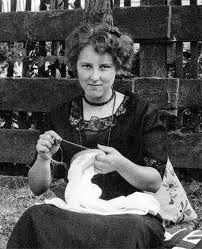Photos and Storytelling
Biff Barnes
One of the wonderful things changes in printing technology has done for family historians and memoirists is to allow their books to be illustrated throughout.
But, that benefit has also presented some difficult choices to authors. Which of the photos in the family album get into their book?
Photos can enhance a book's text in different ways.

-
Your text may refer to a specific image. You are presenting a biographical sketch of Great Grandma and you include her portrait. The purpose is to illustrate the text.
-
The use of a particular photo is a shortcut. You know the saying, a picture is worth a thousand words. Sometimes it's true. You can fill a page with description of the family farm or you might use a photo or two to show your reader what it actually looked like.
-
You can often help smooth the flow of your narrative by using a photo. Sometimes you have a fact or a brief story you think reveals an important facet of the character you are describing, but it will interrupt the flow of your narrative to insert it into the text. For example, you are describing Grand Dad's very successful career in business. But you also know that he managed to find time to volunteer in a variety of ways. Maybe you have a photo of Grand Dad flipping pancakes at a Lions' Club pancake breakfast. The photo and a short caption about his voluntarism would allow you to convey the idea you want without a break in the text.
-
Photos can provide evidence to back up your words. For example, my father's Aunt Florinet worked for Eastman Kodak at the turn of the twentieth century. She was in San Francisco in 1906 when the city was destroyed by the great earthquake and fire. The photos Florinet took conveyed the devastation in ways that words alone never could.

The important thing to remember in choosing photos to illustrate a book is that whichever images you choose should help your reader understand they story you are telling more fully, not just make the page more visually appealing.